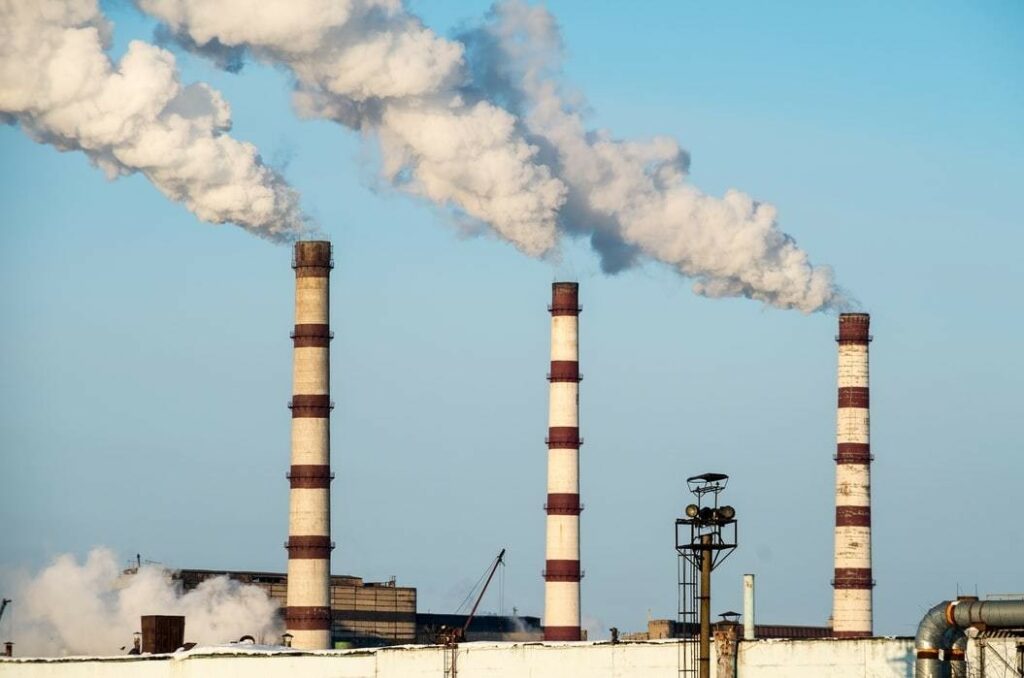In this series on studies that estimate climate sensitivity based on observed climate data rather than climate models, we’ve noted how they usually come out at 2° C or less. And this week’s entry is definitely in the “or less” category. Ray Bates, the just-deceased former mathematician in the Meteorology and Climate Centre of the School of Mathematics and Statistics, University College Dublin, wrote a 2016 paper noting that many of the observation-based ECS estimates are based on using something called a zero-dimensional Energy Balance Model, where everything is reduced to global averages. What if, he asked, we add a bit of spatial detail by modeling the energy balance in the tropics and the extra-tropics independently, and allow heat to be transferred between them sort of like what happens in the real world? The answer is that the estimated ECS drops further from around 2° C to around 1° C.
Bates points out that this outcome was first discovered by MIT climatologist Richard Lindzen and his coauthors more than 20 years ago. In a series of papers they argued that ECS is controlled by the efficiency of the upper atmosphere at expelling heat to space, which is much higher in the tropics than elsewhere, so if the different zones are assumed to expel heat independently and the energy balance model is run using parameters estimated on observed data (that again) instead of model-generated numbers, the global ECS value drops to around 1° C. But, Bates points out, people in the climate field dismissed this finding because it was so different from models and because people thought there were problems in the way heat was transferred in the 2-zone model Lindzen was using.
Setting aside the first objection as circular reasoning, Bates set out to address the second. He took the basic model proposed by Lindzen and added an improved scheme for heat transfer across the zones. He then found updated data to set the parameter values for the calculations and after crunching the numbers estimated ECS to be somewhere in the range of 0.85° to 1.28° C.
So while we’ve been pointing out in this series that the usual IPCC assumption that ECS is around 3° C and could be as high as 5°C is wrong because real world data says it’s likely closer to 2° C, we’ve now got evidence it might be even lower still. And since an ECS of 2° C implies climate change is not a problem, an ECS of 1° C makes it even harder to justify incurring any costs trying to stop it, let alone scaring young people into suicidal depression over the coming apocalypse due to “carbon pollution”.



An interesting Modtran excercise on the UChicago website….pick constant relative humidity, some combination of clouds and atmosphere locality that gives close to 240 watts, like the real planet Earth. You will have to pick come cloud option to do this, since the default is no clouds, but the real planet has 65% cloud cover to achieve its 0.3 albedo Save the 400 ppm run to background. Now change the 400 ppm CO2 to some bigger value…heck, go crazy, double, double, double it again to 3200 ppm. Then adjust the “offset” which would be the new ground level temp. radiating to outer space. Oops, holy cowabunga, your offset only works out to 2.1 or 2.2 degrees to match the 240 watts (admittedly you are assuming 0.3 planetary albedo) incoming solar again….hmmm…3200… Thats 2800 ppm higher than our present 400 ppm CO2 level. Thats only 15 times the 120 ppm CO2 increase since our pre-industrial estimate of 280 ppm. and would take 700 years to get there at the present rate of annual CO2 increase. So at least 15 times the petroleum and forest burnt since 1840. Realizing that humanity will have had to move off fossil fuels by the time 700 yeas goes by…well, kind of takes the edge off the CO2 crisis for me….as well as the 2 to 6 degrees ECS number failing some fairly simple IR absorption calcs…./s
Another UChicago Modtran exercise that anyone can do….go to the uchicago Modtran website (comes up on any search engine). Save the default 400 ppm CO2 case to background. It’s a sunny tropical day with no rain case. Now put in “double, double” CO2 from 400 ppm to 1600 ppm. Put in offset of 2.45 degrees C for higher surface temperature and fixed relative humity to properly allow for the water vapor increase due to temperature of the ocean surface. Run it and find that this is the same heat transfer as the original case. This means the extra 1200 ppm of CO2 to 1600 ppm total will increase the surface temperature by 2.45 degrees on a clear sunny equatorial day. Now think here, the real planet has 65% cloud cover, and persistent thunderheads over equatorial oceans above 27 C, so it is unlikely that 2.45 degrees warmer would be achieved. Plus mankind currently increases CO2 in the atmosphere by 2 ppm per year. We might get to 3 ppm per year, so to get an additional 1200 ppm is some 400 years away…long after the finding costs of oil and gas will have forced some other more economical means of energy production on mankinds descendants.
But hang on! If we accept Koutsoyiannis et al's conclusion that increasing temperature causes increasing CO2, not the other way around (covered in this same Weekly Newsletter - 'A New Year's Resolution'), surely the very concept of ECS (the long-term temperature rise expected to result from a doubling of the atmospheric CO2 concentration) becomes meaningless.
But these calculations leave out the most important factor - who benefits by enormous ECS estimates? Nobody really except for the wind & solar industries (about $5 trillion since 2000), governments who rely on winning elections with slogans such as "we're all doomed unless you vote for our climate change agenda", senior academics and civil servants with climate-related little empires, ENGOs with multi-billion incomes based on climate alarmism, and so on. Nobody of any importance really.
All of this can be accounted for by the Influence Driven ECS Accelerator (IDEA) parameter. Assuming a real-world ECS of about 1.0, the IDEA currently stands at about 500%.
Doug:
I see what you are driving at but you are leaving yourself wide open for misinterpretation. You are effectively saying that at constant albedo (a huge assumption that could be very wrong) this massive increase in CO2 will cause a 2.75 deg. increase in surface temp and yet, the total heat input from the sun (240 watts/sq. m) remains the same. Based on what ? Of course it all gets exhausted to space eventually but from an ECS point of view in the air immediately above the ground, so what ? My full scale experimental approach called the ACTS (see http://www.dextras.com/climate.html ) is much more direct and reliable. I use the maximum heat input (340 watts/sq. m) and keep it constant and using various combinations of surface temp, moisture content, wind speed and CO2 at 400ppm, we then double and triple the CO2 content at each one of these combinations and measure directly the net increase in surface temps. So far, there are 108 different test conditions and so, if this CO2 ECS theory is correct in any way, it has to show up there. If it doesn't, then the whole thing is a freely invented fabrication. What do you think ? Let me know. Thanks.
P.S. " Many equations can prove me right, but a single well designed experiment can prove me absolutely wrong." Albert Einstein
Kenneth G. Dextras, B. Eng., McGill '76